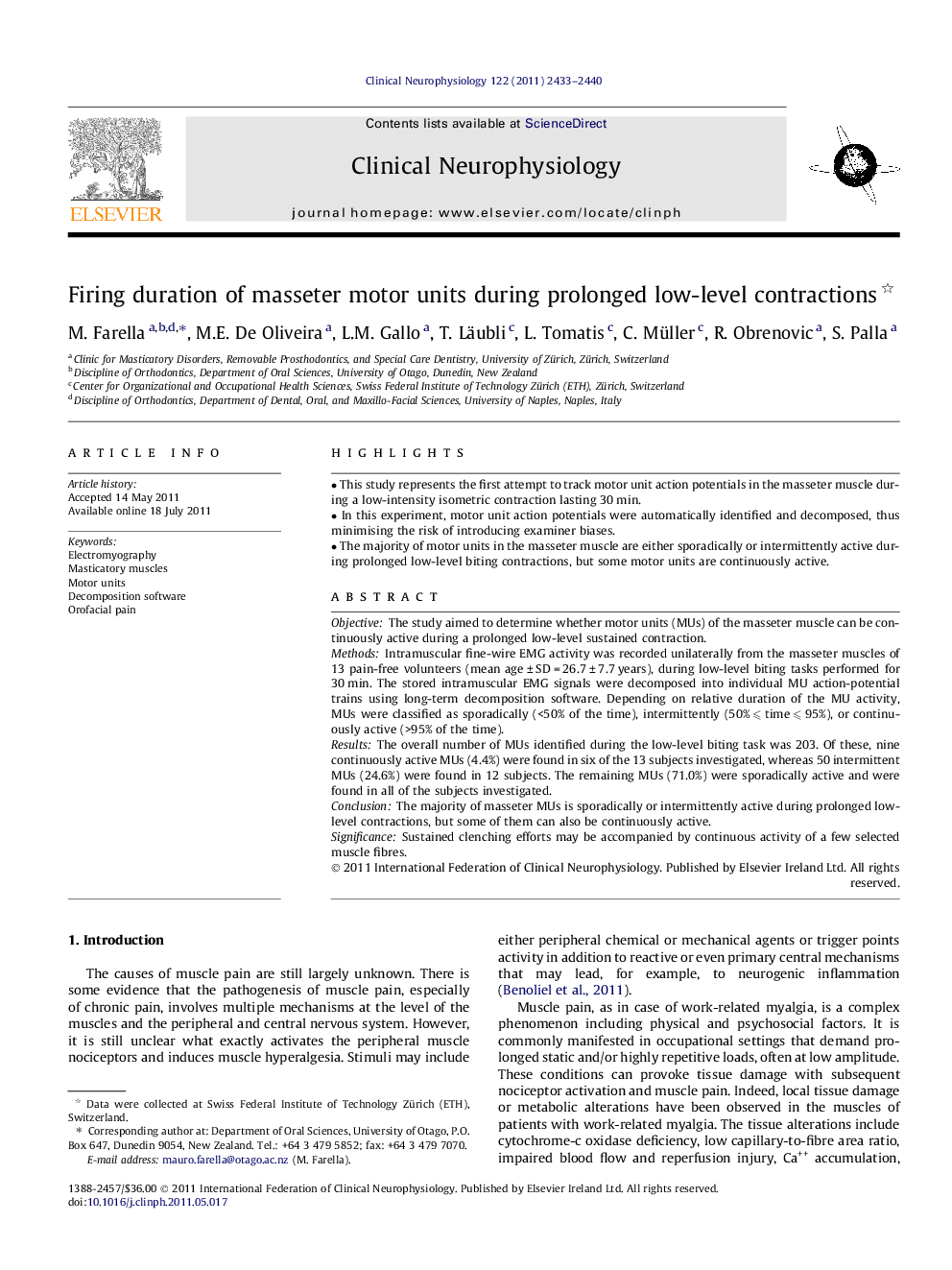| Article ID | Journal | Published Year | Pages | File Type |
|---|---|---|---|---|
| 3043980 | Clinical Neurophysiology | 2011 | 8 Pages |
ObjectiveThe study aimed to determine whether motor units (MUs) of the masseter muscle can be continuously active during a prolonged low-level sustained contraction.MethodsIntramuscular fine-wire EMG activity was recorded unilaterally from the masseter muscles of 13 pain-free volunteers (mean age ± SD = 26.7 ± 7.7 years), during low-level biting tasks performed for 30 min. The stored intramuscular EMG signals were decomposed into individual MU action-potential trains using long-term decomposition software. Depending on relative duration of the MU activity, MUs were classified as sporadically (<50% of the time), intermittently (50% ⩽ time ⩽ 95%), or continuously active (>95% of the time).ResultsThe overall number of MUs identified during the low-level biting task was 203. Of these, nine continuously active MUs (4.4%) were found in six of the 13 subjects investigated, whereas 50 intermittent MUs (24.6%) were found in 12 subjects. The remaining MUs (71.0%) were sporadically active and were found in all of the subjects investigated.ConclusionThe majority of masseter MUs is sporadically or intermittently active during prolonged low-level contractions, but some of them can also be continuously active.SignificanceSustained clenching efforts may be accompanied by continuous activity of a few selected muscle fibres.
► This study represents the first attempt to track motor unit action potentials in the masseter muscle during a low-intensity isometric contraction lasting 30 min. ► In this experiment, motor unit action potentials were automatically identified and decomposed, thus minimising the risk of introducing examiner biases. ► The majority of motor units in the masseter muscle are either sporadically or intermittently active during prolonged low-level biting contractions, but some motor units are continuously active.
